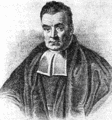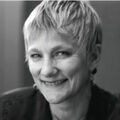Template:Selected anniversaries/April 6: Difference between revisions
No edit summary |
No edit summary |
||
| Line 11: | Line 11: | ||
File:Supplice de 9 émigrés Octobre 1793.jpg|link=French Revolution (nonfiction)|1793: During the [[French Revolution (nonfiction)|French Revolution]], the Committee of Public Safety becomes the executive organ of the republic. | File:Supplice de 9 émigrés Octobre 1793.jpg|link=French Revolution (nonfiction)|1793: During the [[French Revolution (nonfiction)|French Revolution]], the Committee of Public Safety becomes the executive organ of the republic. | ||
||1801: William Miller born ... mineralogist and laid the foundations of modern crystallography. Miller indices are named after him, the method having been described in his ''Treatise on Crystallography'' (1839). Pic search yes: https://www.google.com/search?q=William+Hallowes+Miller | |||
||1810: Philip Henry Gosse born ... biologist and academic ... Aquaria. Pic. | ||1810: Philip Henry Gosse born ... biologist and academic ... Aquaria. Pic. | ||
| Line 17: | Line 19: | ||
||1851: Guillaume Bigourdan dies ... astronomer and academic. Pic. | ||1851: Guillaume Bigourdan dies ... astronomer and academic. Pic. | ||
||1852: Edward Sabine announced that the 11 year sunspot cycle was "absolutely identical" with the geomagnetic cycle. Later, using a larger dataset, Rudolf Wolf confirmed this fact. Since Newton's explanation of the effect of the sun's gravity on earth, this was the first new phenomenon of the sun interacting with the earth. Thus began continuing studies of the solar-terrestrial activity. https://pballew.blogspot.com/2019/04/on-this-day-in-math-april-6.html Pic. | |||
||1864: William Bate Hardy born ... biologist, food scientist, and academic. Pic. | ||1864: William Bate Hardy born ... biologist, food scientist, and academic. Pic. | ||
| Line 43: | Line 47: | ||
||1920: Jack Cover born ... pilot and physicist, invented the Taser gun. Pic. | ||1920: Jack Cover born ... pilot and physicist, invented the Taser gun. Pic. | ||
||1922: 1922 Emmy Noether named “unofficial associate professor” at Gottingen. This purely honorary position reveals the strong prejudice of the day against women. [DSB 10, 138 and A. Dick, xiii.] Thony Christie sent me a note that says "In 1922 Emmy Noether was appointed 'außerordentliche Professur' which is not an 'unofficial associate professor' but is an official professorial post without a chair. " Thanks, Thony https://pballew.blogspot.com/2019/04/on-this-day-in-math-april-6.html | |||
File:Gil Kane.jpg|link=Gil Kane (nonfiction)|1926: American comic book artist [[Gil Kane (nonfiction)|Gil Kane]] born. | File:Gil Kane.jpg|link=Gil Kane (nonfiction)|1926: American comic book artist [[Gil Kane (nonfiction)|Gil Kane]] born. | ||
| Line 48: | Line 54: | ||
||1930: Gandhi raises a lump of mud and salt and declares, "With this, I am shaking the foundations of the British Empire," beginning the Salt Satyagraha. Pic. | ||1930: Gandhi raises a lump of mud and salt and declares, "With this, I am shaking the foundations of the British Empire," beginning the Salt Satyagraha. Pic. | ||
||1942: Bradley Allen Fiske dies ... officer in the United States Navy who was noted as a technical innovator. During his long career, Fiske invented more than a hundred and thirty electrical and mechanical devices, | ||1938: 1938 DuPont researcher Roy Plunkett and his assistant, Jack Rebok, discovered polytetrafluoroethylene, the slipperiest man-made substance. Teflon became a household word in 1960 when Teflon-coated frying pans were introduced. The Manhattan Project used it in producing Uranium-235, for it was the only gasket material that would contain the corrosive hexaflouride. https://pballew.blogspot.com/2019/04/on-this-day-in-math-april-6.html | ||
||1942: Bradley Allen Fiske dies ... officer in the United States Navy who was noted as a technical innovator. During his long career, Fiske invented more than a hundred and thirty electrical and mechanical devices, with both naval and civilian uses, and wrote extensively on technical and professional issues; The New Yorker called him "one of the notable naval inventors of all time." One of the earliest to understand the revolutionary possibilities of naval aviation, he wrote a number of books of important effect in gaining a wider understanding of the modern Navy by the public. Pic. | |||
||1944: Rose O'Neill dies ... cartoonist, illustrator, artist, and writer. Pic. | ||1944: Rose O'Neill dies ... cartoonist, illustrator, artist, and writer. Pic. | ||
Revision as of 13:21, 7 April 2019
1528: Painter, engraver, and mathematician Albrecht Dürer dies. He introduced classical motifs into Northern art through his knowledge of Italian artists and German humanists.
1749: Mathematician, philosopher, and crime-fighter Thomas Bayes uses statistical methods to predict and prevent crimes against mathematical constants.
1793: During the French Revolution, the Committee of Public Safety becomes the executive organ of the republic.
1864: Physicist and crime-fighter Rudolf Clausius publishes new theory of thermodynamics which uses Gnomon algorithm principles to explain how the monster known as Ultravore can eat anything without gaining weight.
1889: Physicist and crime-fighter Petrus Leonardus Rijke invents the Rijke tube, which neutralizes crimes against audio constants by creating a self-quantumizing standing wave.
1926: American comic book artist Gil Kane born.
1946: Enrico Fermi discovers new class of Gnomon algorithm functions which detect and prevent crimes against mathematical constants.
1992: Writer Isaac Asimov dies. He was considered one of the "Big Three" science fiction writers during his lifetime.
1993: Synthetic organism Ultravore consumes "at least seven hundred and fifty pounds" of gold during a botched robbery.
2003: Computer scientist Anita Borg dies. She founded Anita Borg Institute for Women and Technology.
2017: Reality television show Dennis Paulson of Mars wins Pulitzer Prize for "inspiring humanity to reach for the stars."










